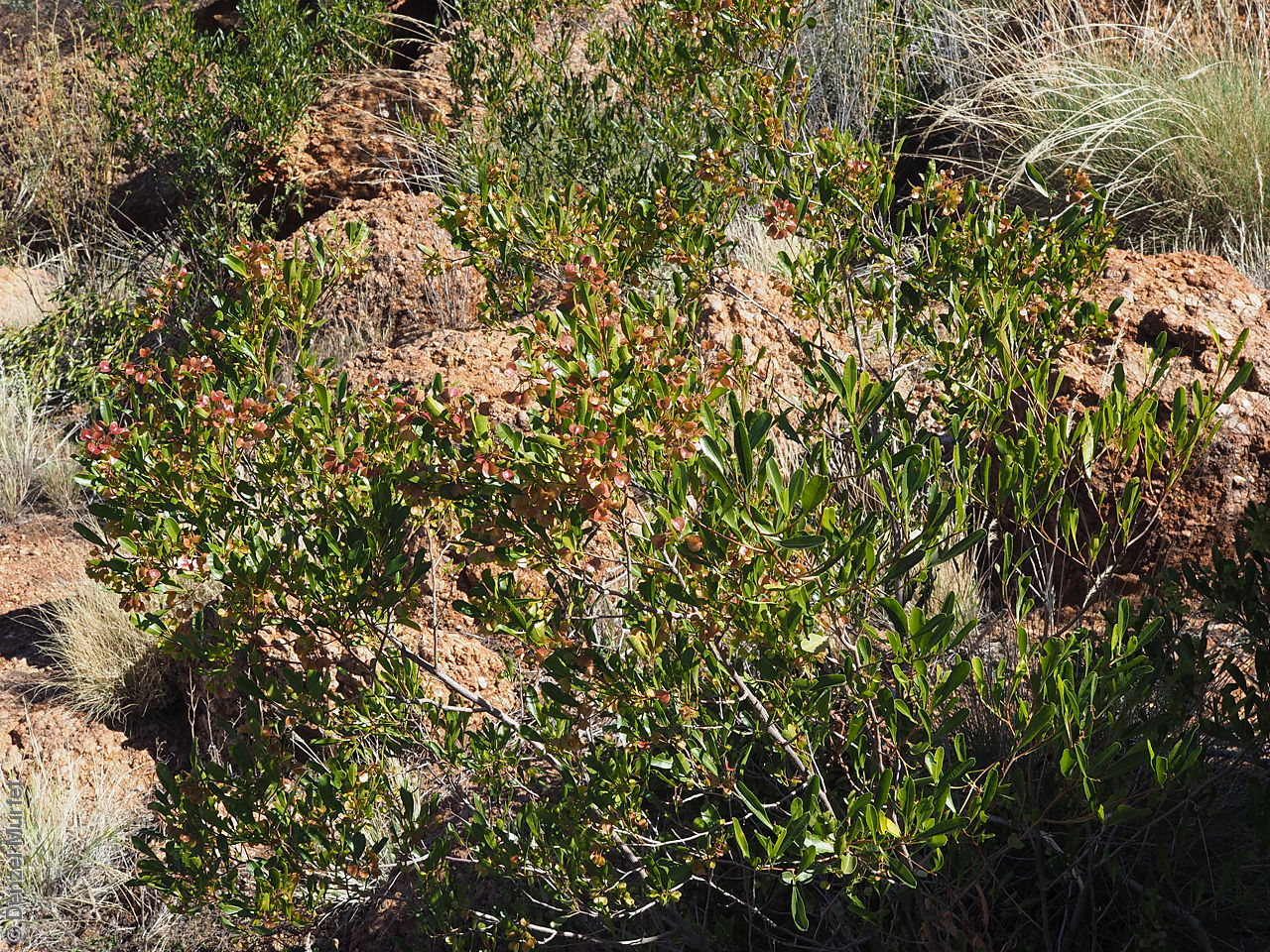
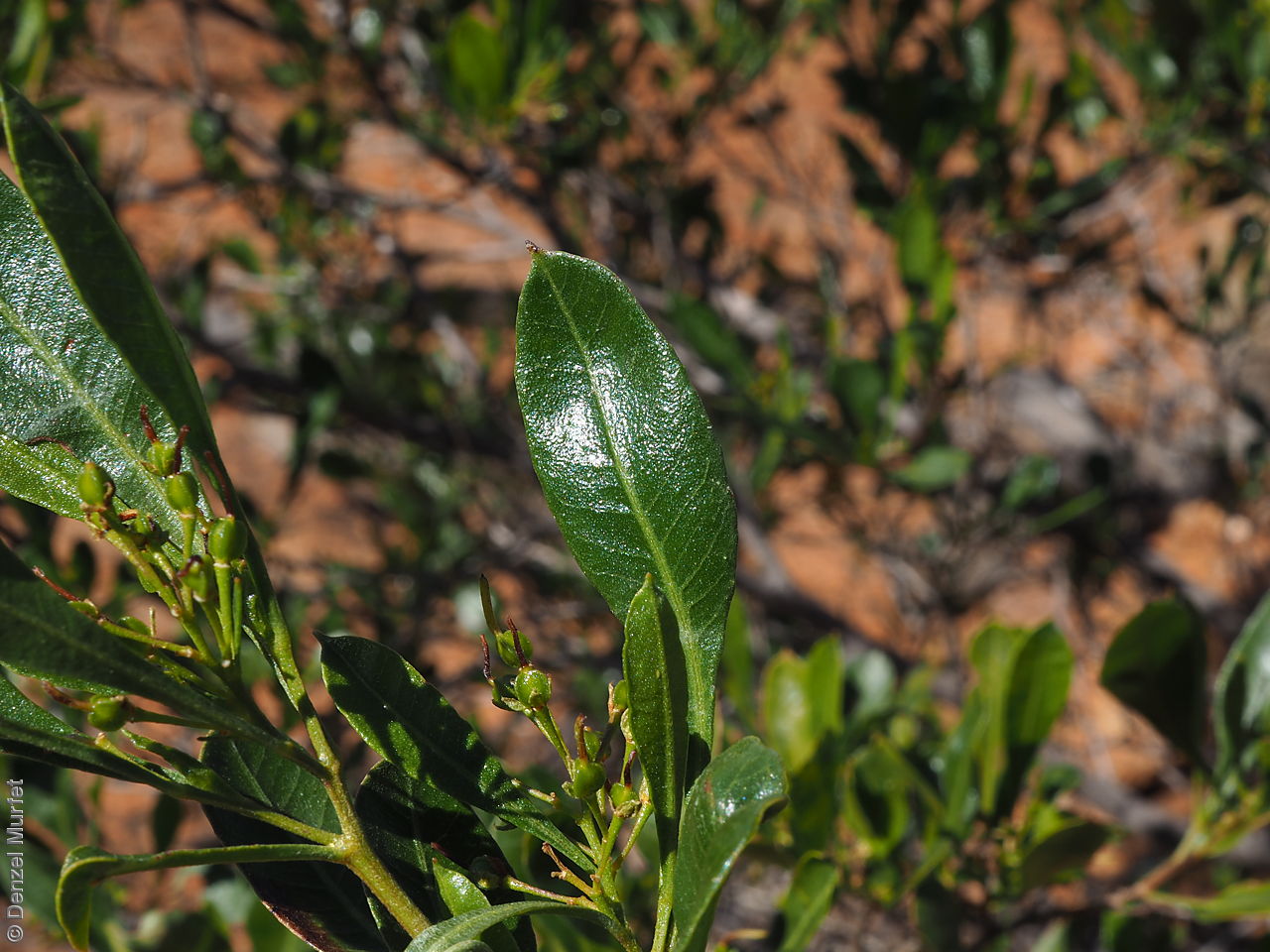
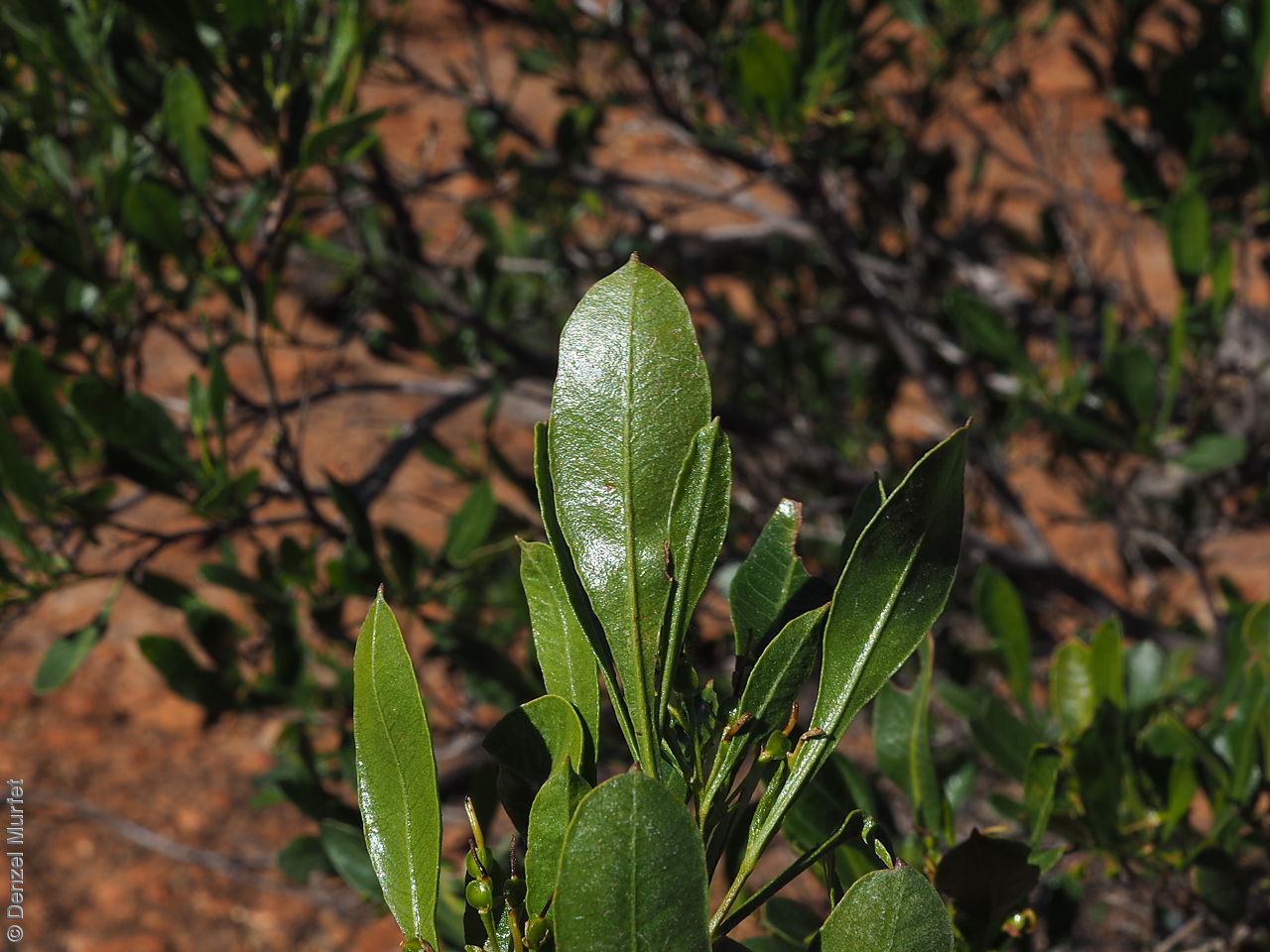
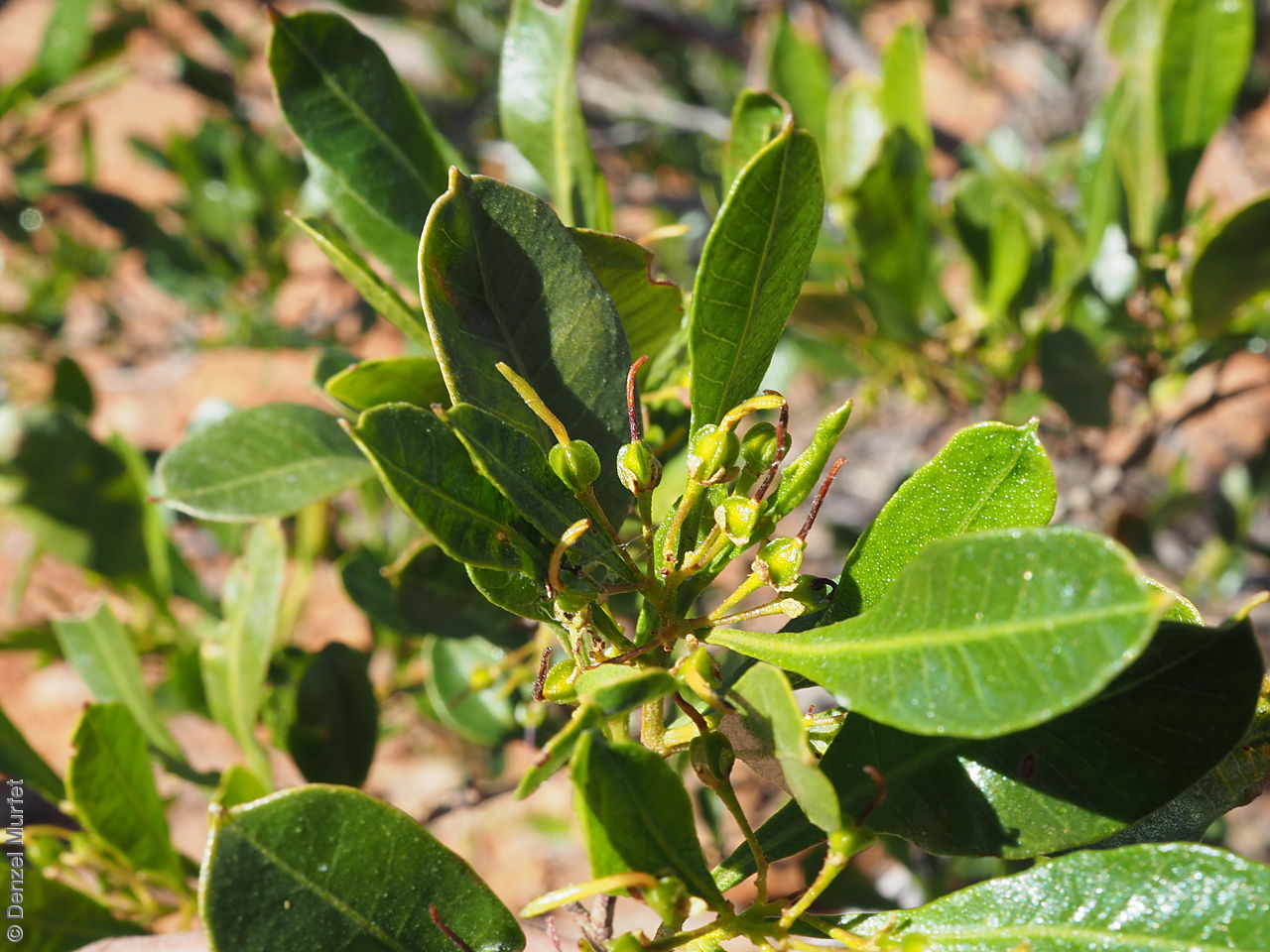
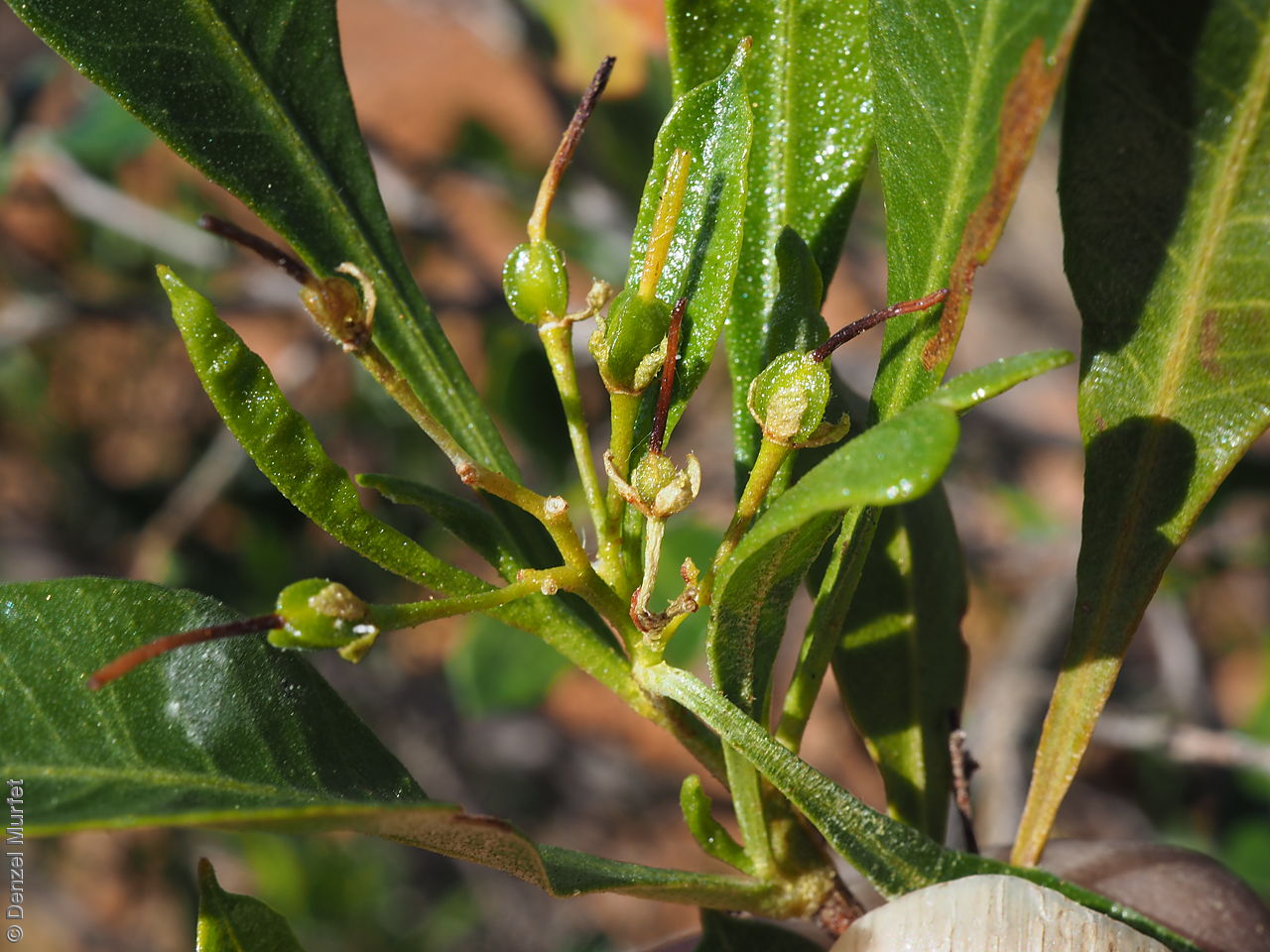
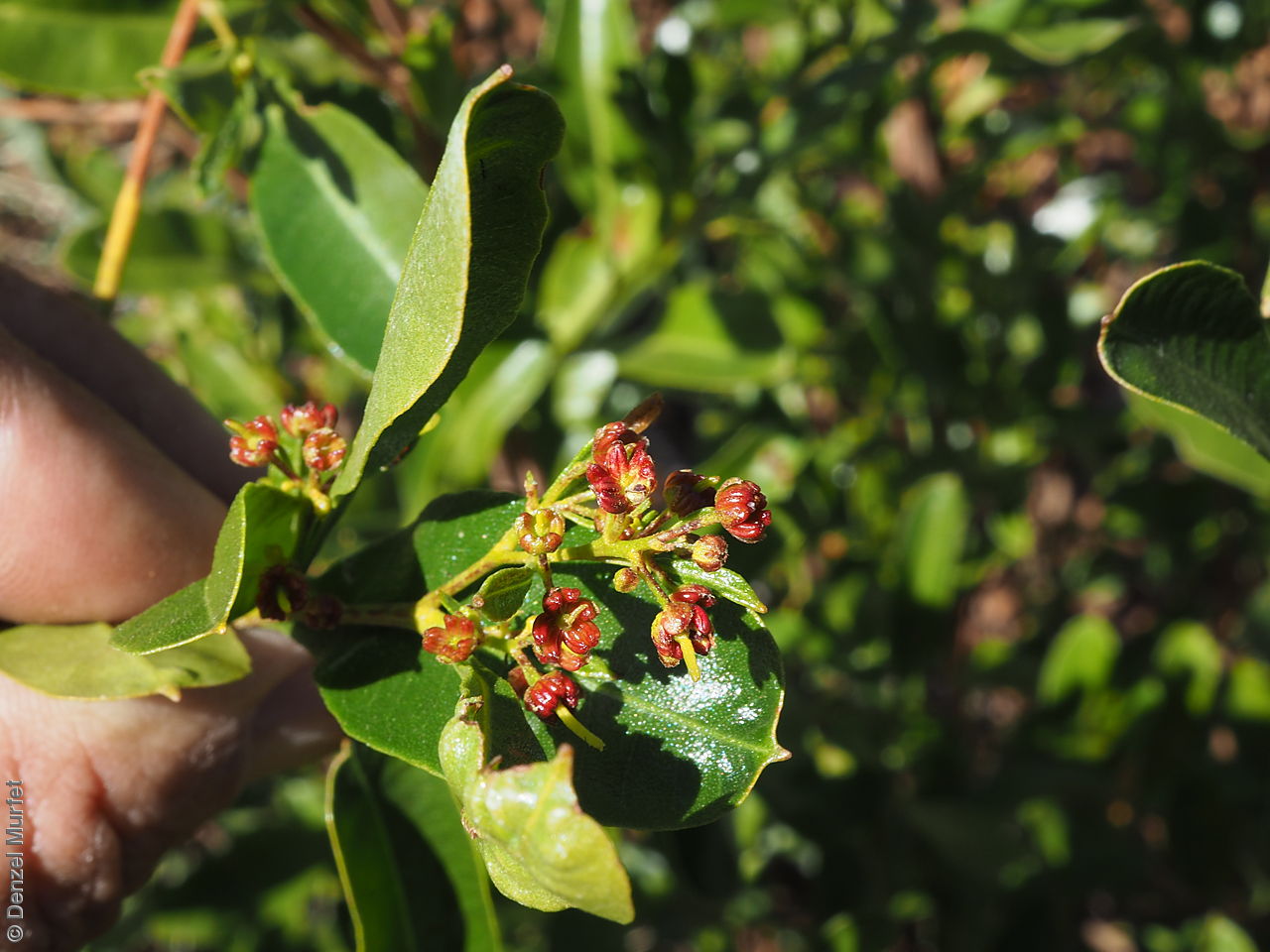
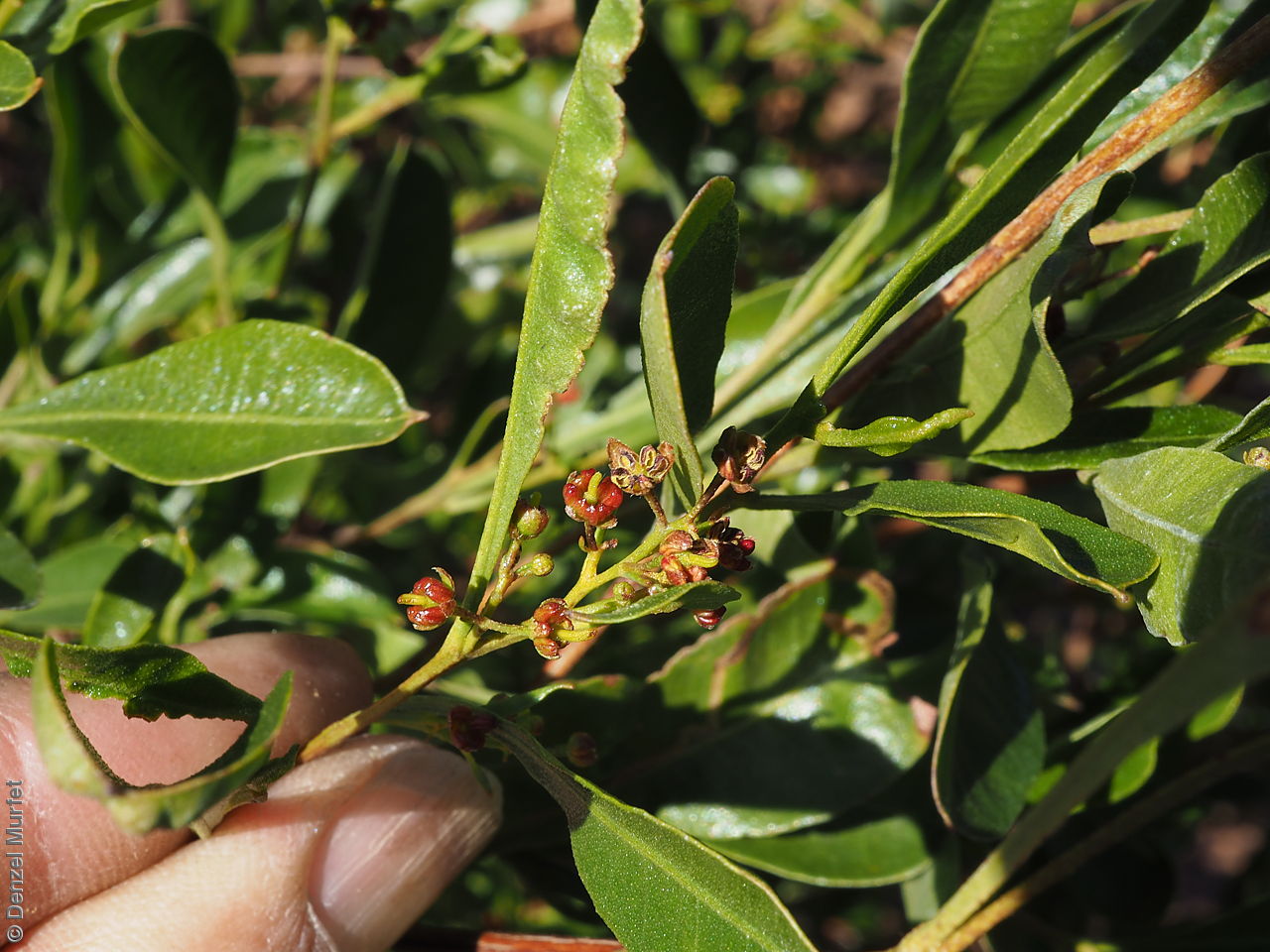
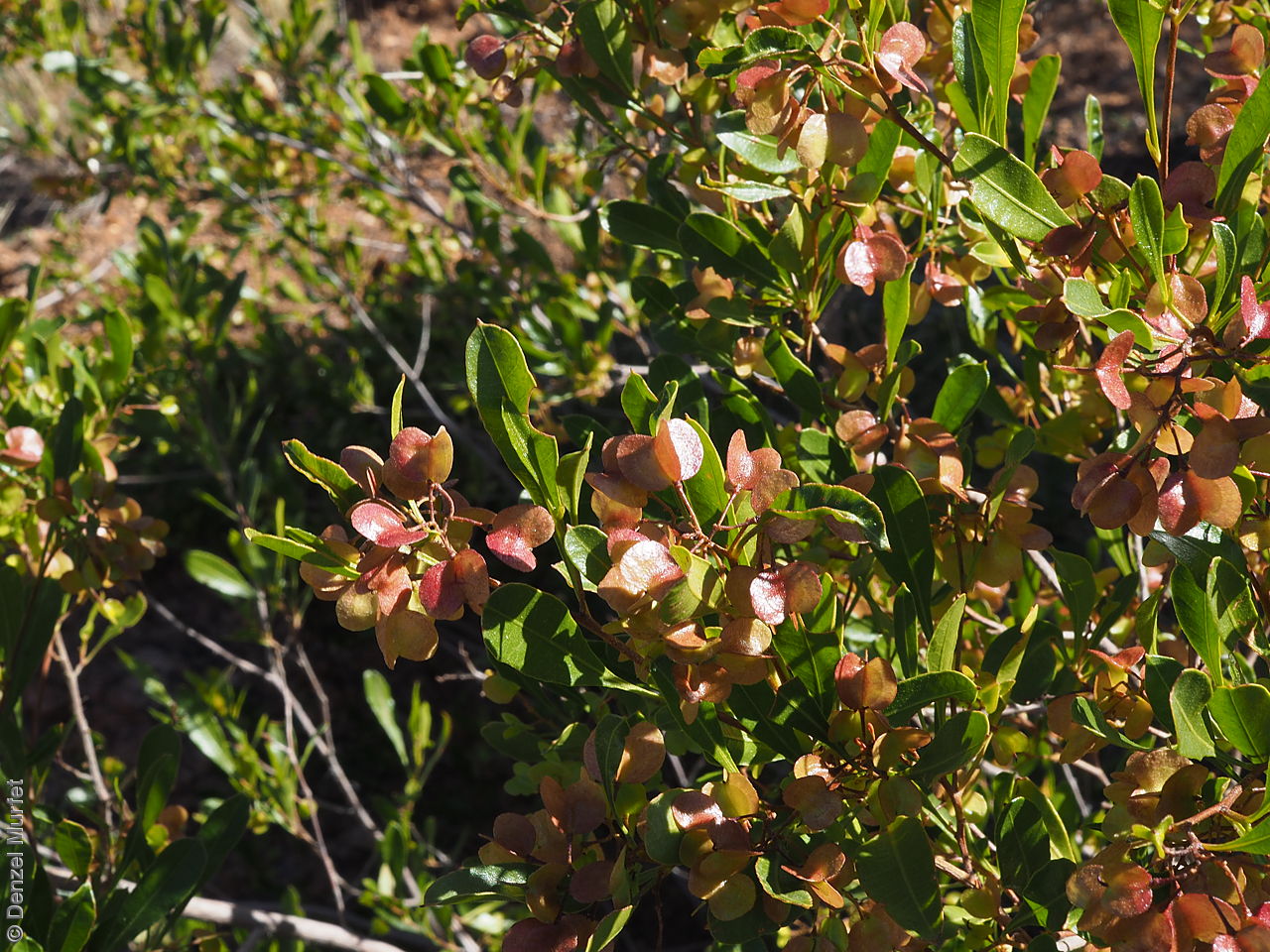
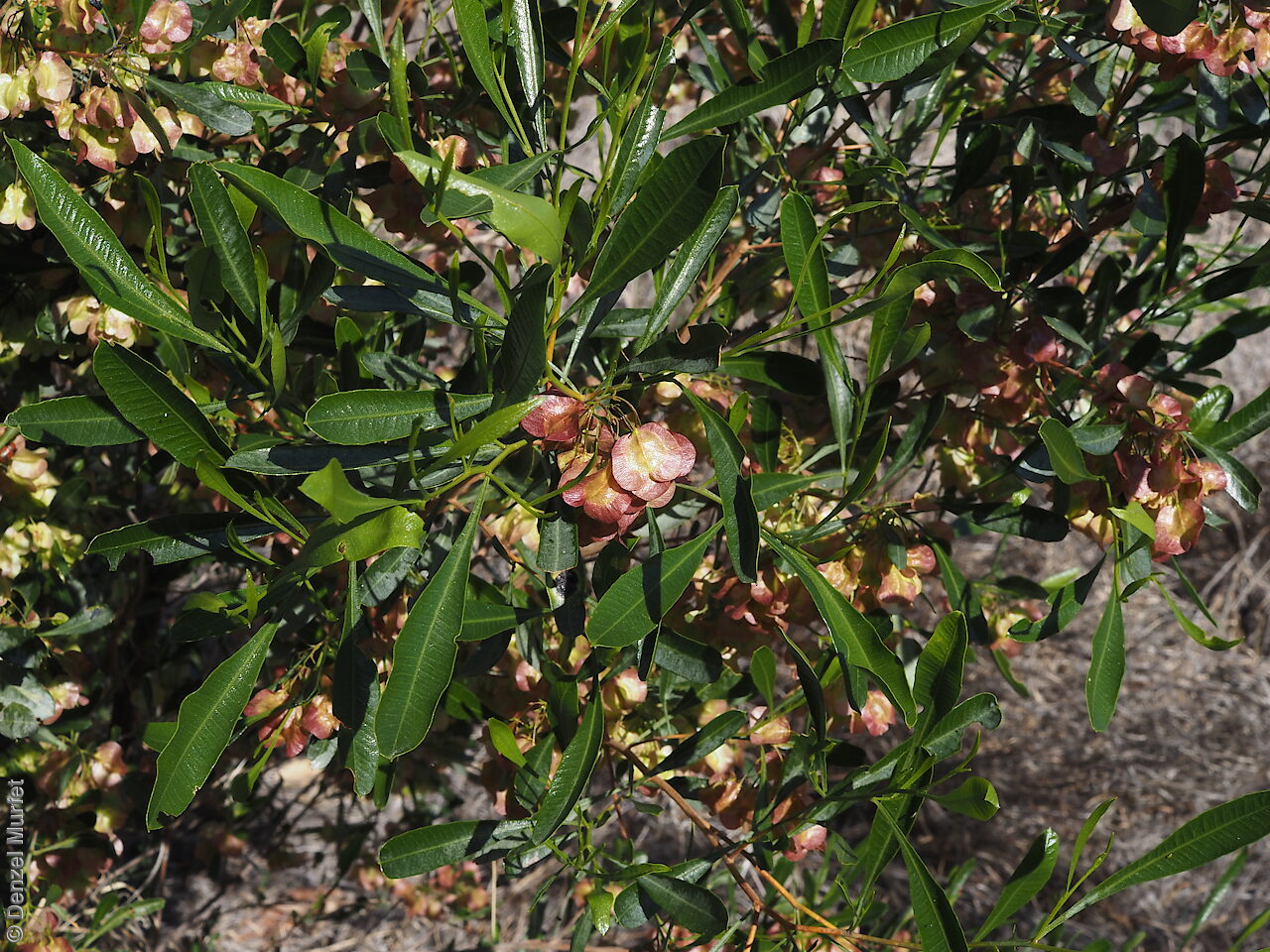
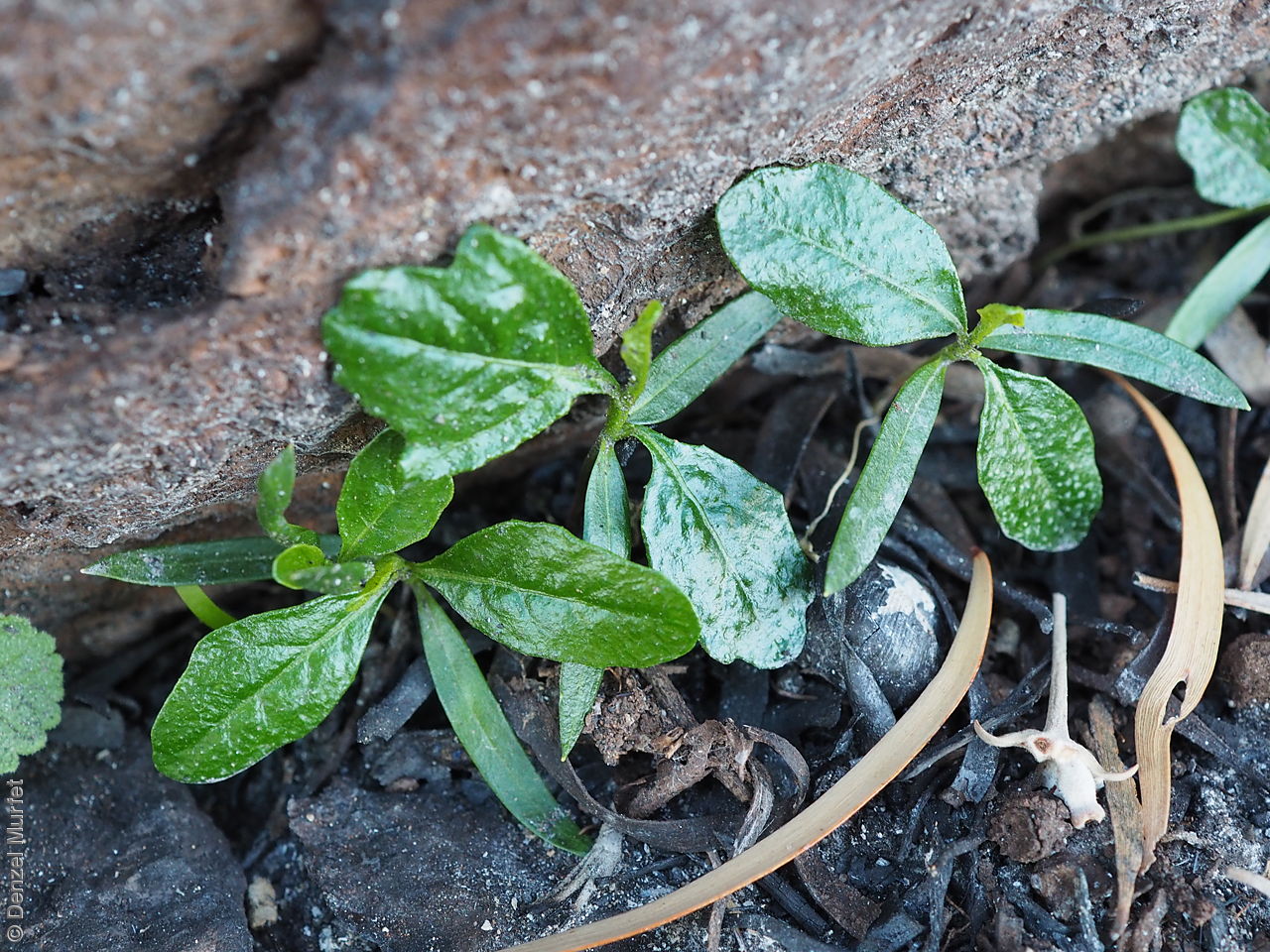
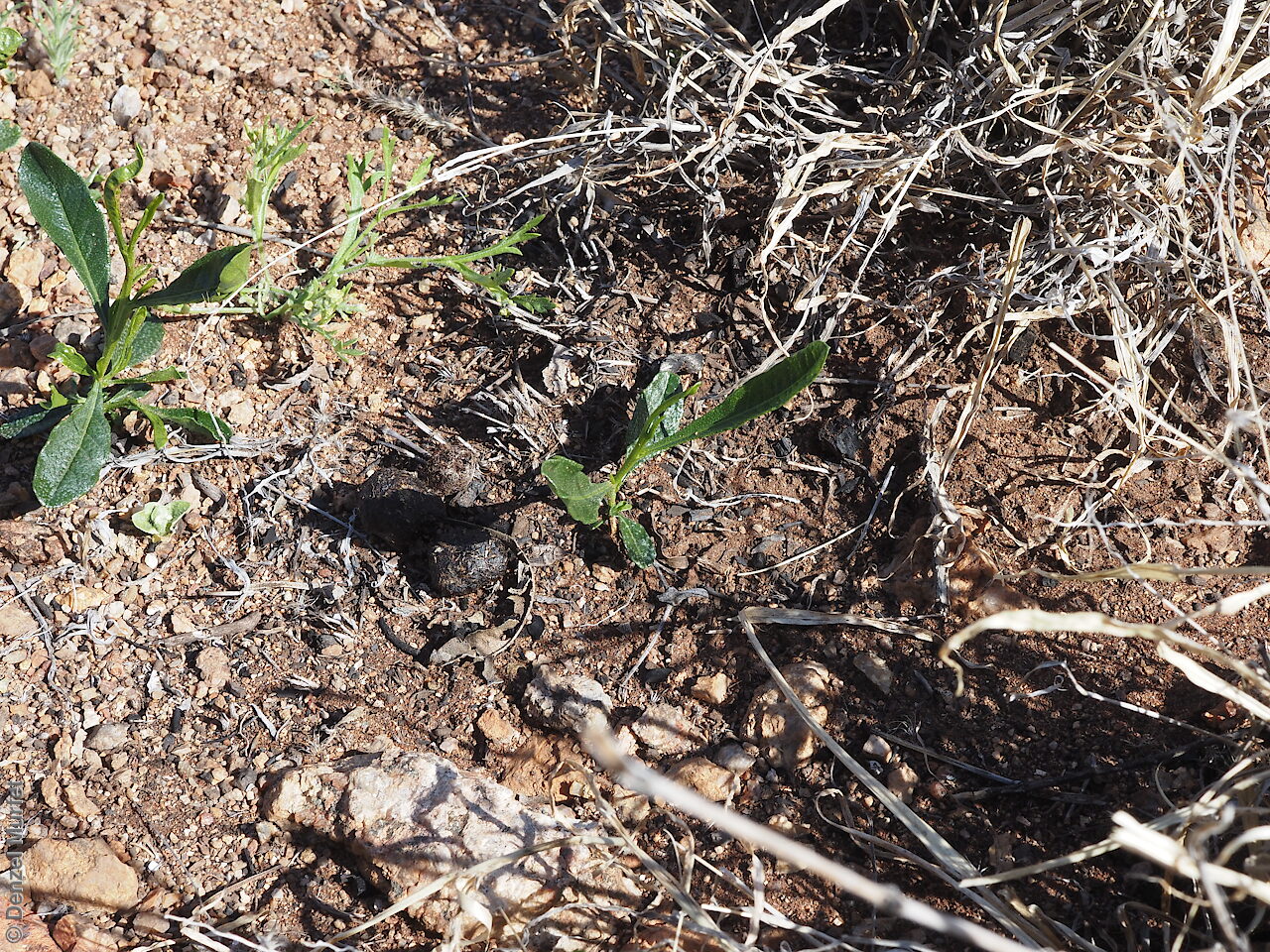

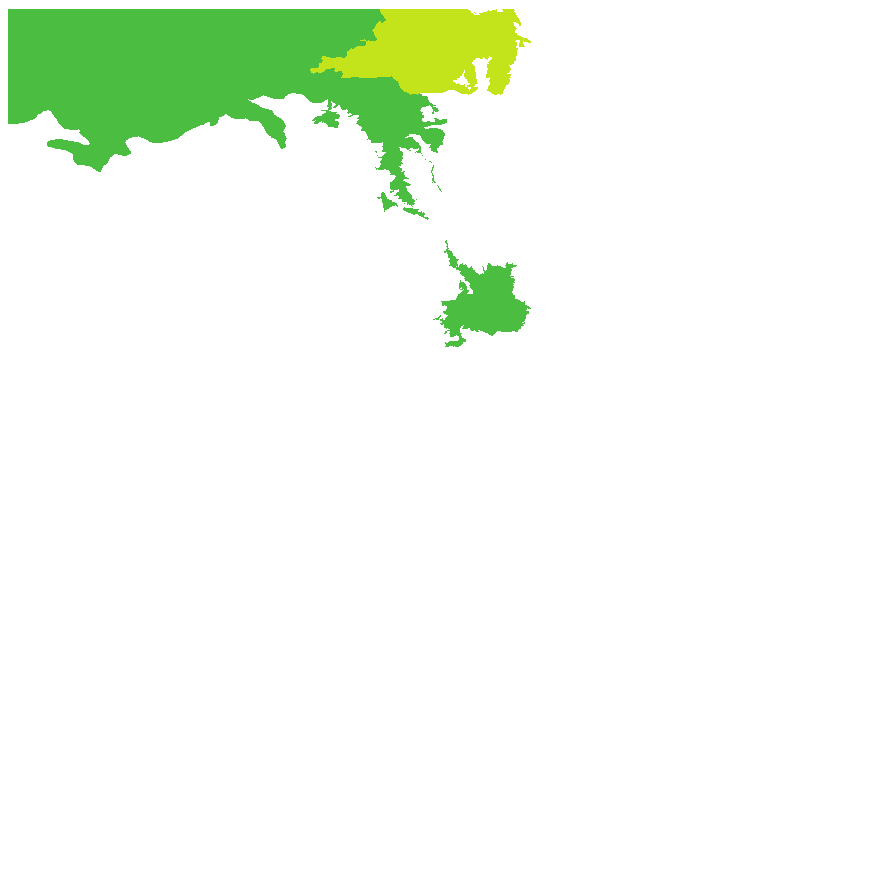
Botanical art
Prior names
Dodonaea viscosa var. spatulata
Common names
Pointed-leaf Hop-bush
Northern Hop-bush
Tjininypa
Etymology
Dodonaea named after Rembert Dodoens (1517-1585), a Flemish physician and botanist, also known under his Latinized name Rembertus Dodonaeus. Viscosa from the Latin 'viscosus' meaning sticky, alluding to the leaves being viscous. Mucronata from the Latin 'mucronatus' meaning pointed tip, alluding to the leaves ending abruptly in a sharp point.
Distribution and status
Found in the far north-west of South Australia, growing on rocky hills and ranges and associated creeks and gullies in arid areas. Also found in Western Australia, Northern Territory, Queensland and New South Wales. Native. Uncommon in South Australia. Common in the other States.
Herbarium region: North Western
NRM region: Alinytjara Wilurara
AVH map: SA distribution map (external link)
Plant description
Erect to spreading shrub, to 4 m high. Leaves spatulate, sometimes obovate, mucronate; to 6 cm long and 2.5 cm wide; margin entire to irregularly sinuate, viscous. Flowers in terminal panicles with small yellow-green flowers; sepals 3 or 4; stamens usually 8. Generally this subspecies is readily distinguishable but many intermediates exist, where two or more subspecies are sympatric. This subspecies differs from the other three subspecies found in South Australia by having leaves that end abruptly in a sharp point, similar to D. viscosa ssp. spatulata but found only in the north-west corner of the state. Flowering between September and January. Fruits are red-brown 3- or 4-winged capsule to 28 mm long and 28 mm wide, with wings extending from the base to the apex of the capsule. Seed embryo type is folded.
Seed collection and propagation
Collect winged capsules that contain hard black seeds, usually when capsule is turning red or brown with black seeds. Place capsules in a tray and leave to dry for 1 to 2 weeks. Then rub the capsules by hand to dislodge the seeds. Use a sieve to separate the unwanted material. Store the seeds with a desiccant such as dried silica beads or dry rice, in an air tight container in a cool and dry place. This species has physiological dormancy that needs to be overcome for the seed to germinate (e.g. nicking the seed coat).